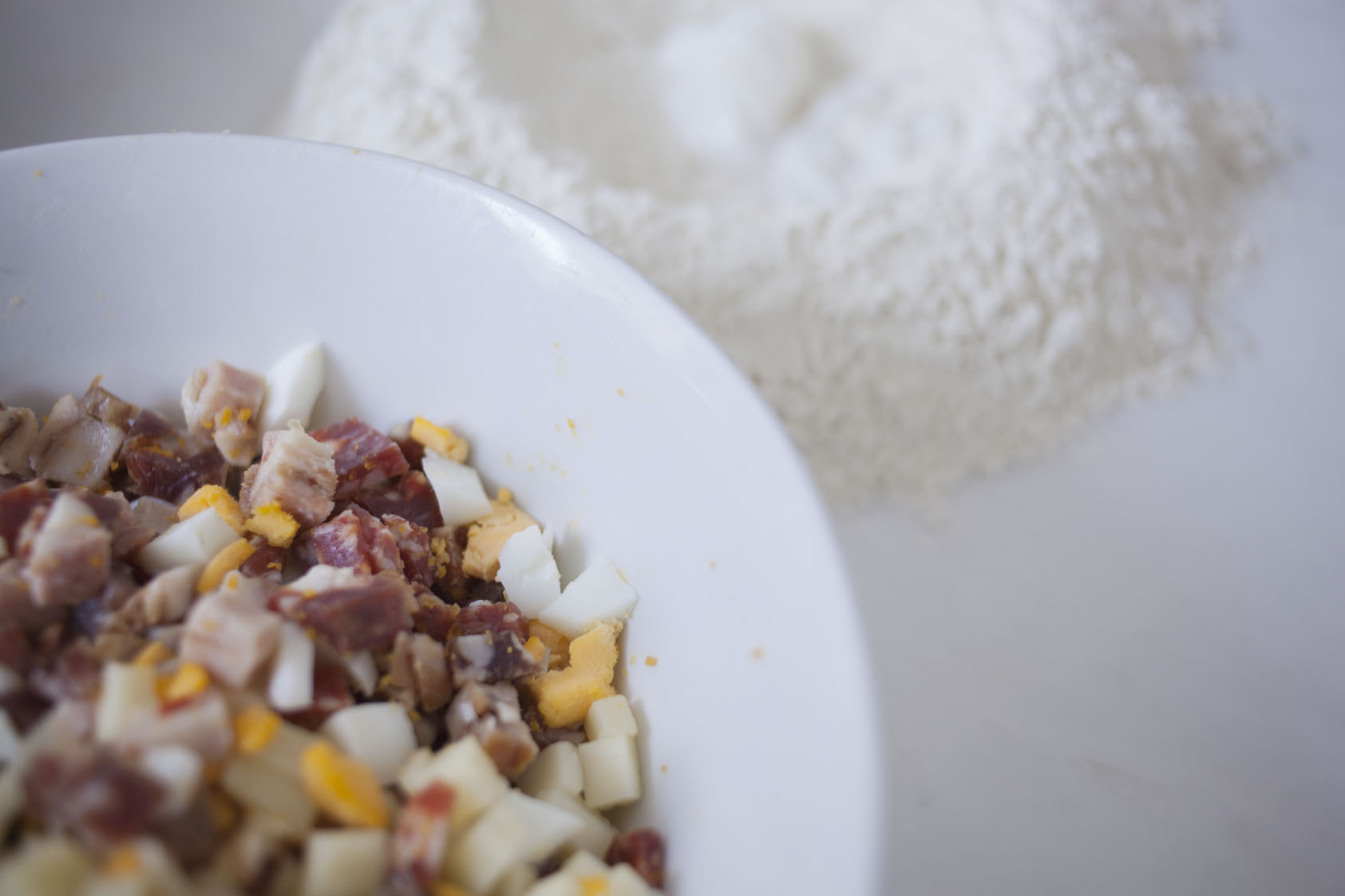Easter Eve, at 1 pm. On the tables in Naples and the whole Campania cannot be missing the absolute protagonist of the Holy Saturday: a delicious dough made from flour, yeast, lard, cold cuts, cheeses and eggs.
The tortano just takes out of the oven | Ph. Machi di Pace

It's the Neapolitan tortano, and as you can guess, is not recommended in diets. But the importance of the day suggests sumptuous celebrations, even on the table. Therefore you have to taste this rustic donut, baked in the oven and with a very intense smell.
Let's start with the circular shape. As often in the Neapolitan tradition, the aspect of the sacred is always present, since it is inspired by the crown of thorns that was placed on the head of Jesus during the Passion. Even the presence of the egg inside the dough has a strong symbolic value. Already for the Jewish religion, eggs were a symbol of the continuous cycle of life - between death and rebirth - precisely because of their circular shape. In Christianity, the egg becomes a sign of rebirth, both for Nature (with the arrival of spring) and for man: just as the chick is born from the shell, Jesus revives from his sepulchre.
These are just some ingredients of the tortano | Ph. Machi di Pace

Between sacred, profane and good food, this Neapolitan recipe fully respects the rules of popular Campania cuisine. First commandment (since we are also in the Easter period): nothing is thrown away. So go ahead for cold cuts and cheeses, perhaps left over from the previous days. In general: sweet and spicy provolone, caciocavallo (a kind of aged cheese born in South Italy) , not too aged pecorino; Neapolitan salami cut into thick cubes, mortadella also cut in the same way, plus boiled eggs. Finally salt and pepper.
The second commandment is a direct consequence of the first: since nothing is thrown away, even the tortano cannot be consumed one-off. It is not one of those dishes that must be eaten immediately. If keepen well, at the right temperature, it will last more than a few days. Certainly until Easter Monday, his second day of election.
Eggs, cicoli, lard and pepper are put on the dough | Ph. Machi di Pace

Finding among the recipes of ancient times, we discover a basic distinction, between tortano and “casatiello”. In fact, the rustic donut stuffed with cold cuts and cheeses was originally the latter. The tortano was seasoned with poorer ingredients: flour, lard, pepper, eggs and cicoli (hand-cut pieces of pork cooked on a slow fire). Hence the confusion between tortano or casatiello, since the two recipes over time are more and more similar.
Either one or the other, we are certainly talking about one of the most iconic dishes of Campania culture. Tasty, satisfying and full of symbolic meanings, from Easter to the symbols of rebirth. It is no coincidence that, still today, it is one of the most appreciated courses by those who celebrate the days of the Resurrection.

